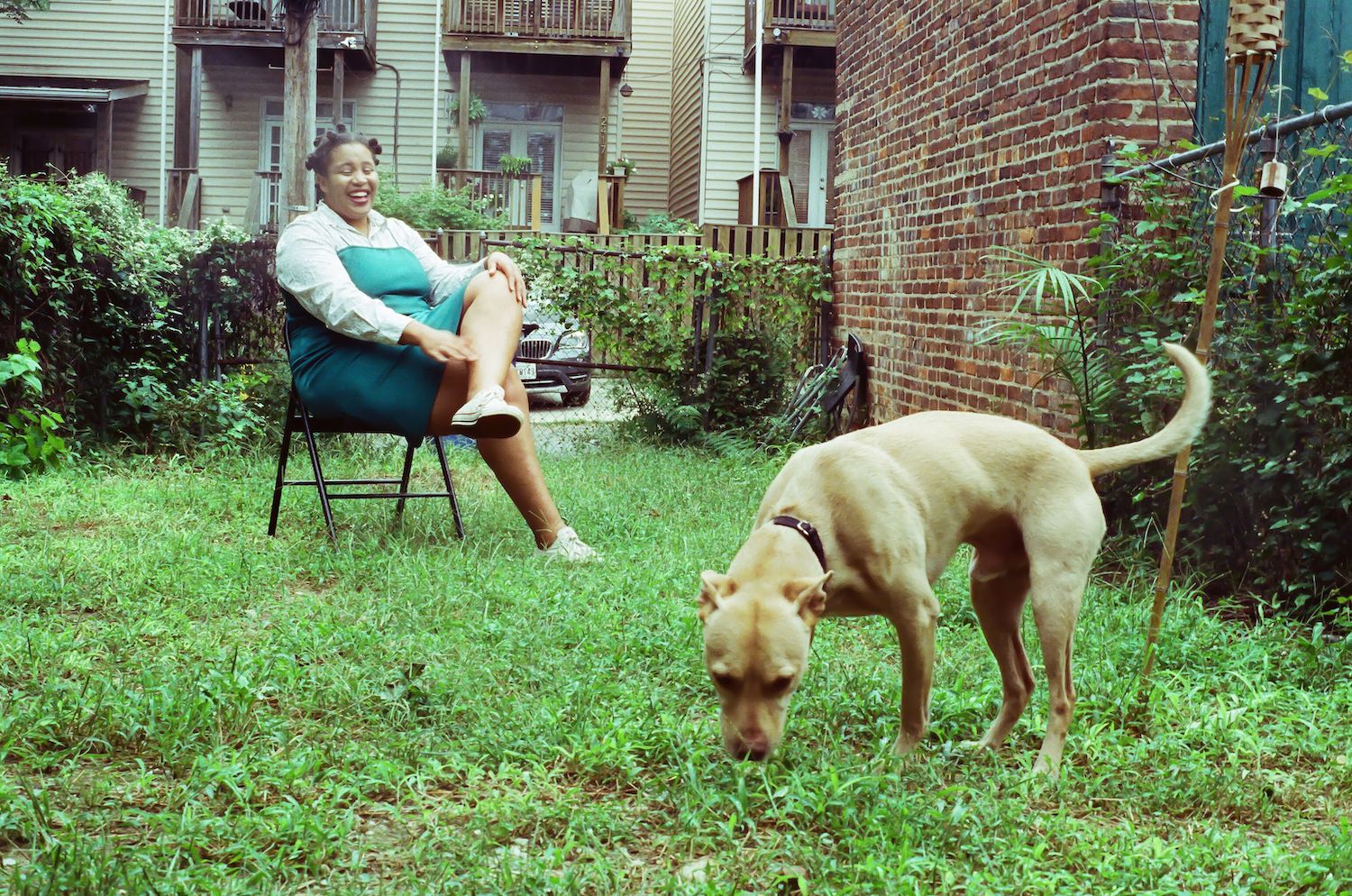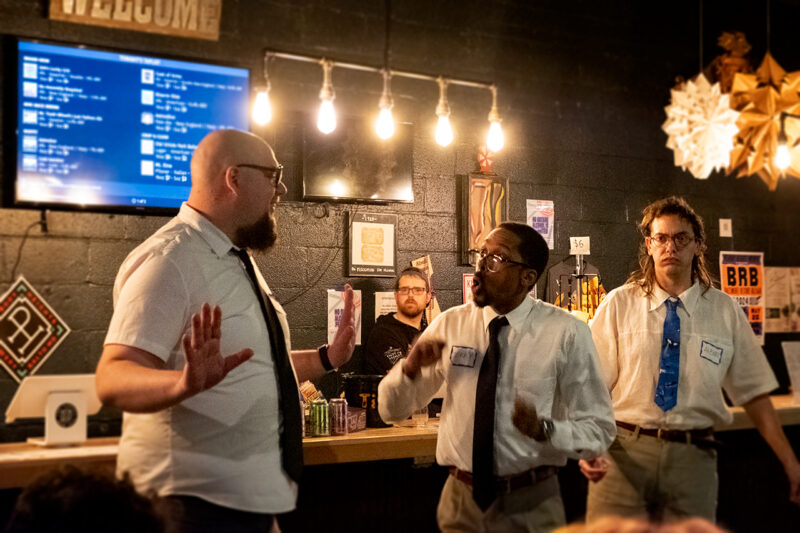“Outside” opens with a slow-moving shot of a black couple holding each other attentively. The anxious voice of a woman unseen is heard asking, “What’s happening right now?” Police sirens blare in the background and mix with the voice of a crowd. “Who’s outside?” she asks again. This is the calm before the storm.
From there the short film that doubles as a music video snowballs into a moving collage of artfully shot black-and-white portraits, scenes of life in Baltimore neighborhoods spliced with eerie clips of idling objects and people in colorful settings. The kinetic energy is abundant in “Outside,” like when Jurdan Bryant raps ”Grab a knot/ out the sock/ put the gun away”—a roll of money is pulled out of a black sock, a gun is placed on a table top and just barely covers a magazine featuring the singer Sade’s face. “This the type of shit that make God put the sun away.” Jurdan leans out of a window, then we cut to a cloud covering the sun.

Diamon Fisher and Wykeem Franklin in “Outside”
Our protagonist Jurdan appears to be a drug dealer going through his mundane daily rituals, but he’s accompanied by a small boy who looks just like him. The kid is a show stealer. He’s deeply perturbed throughout the video as if he knows something we don’t. Even standing in a beautiful pasture with the sun beaming on his back, he still holds the same uncomfortable gaze. Much of the film, in fact, holds a sense of deep discomfort. Jumping between classic black-and-white and selectively colored shots that displace the viewer by showing Jurdan in army fatigues in the woods, the film conveys the hectic energy that accompanies black life in Baltimore.
The film reminded me of Charles Burnett’s seminal drama Killer of Sheep, but co-directors Austin-Taylor Richburg and Alonzo Hellerbach cite European influences like directors Mathieu Kassovitz and Elem Klimov. “We wanted the look of the film to embody the raw emotions and objective truths of the music, the stories being told, and the people of Baltimore,” say Hellerbach and Taylor, via email. “In the edit we spent a lot of time messing with the relationship of images. For example, the teeth that cut in the middle of the pan in the room, we didn’t have that written in but it was such a wild break-up in imagery that we had to put it in.”

Alonzo Hellerbach and Austin-Taylor Richburg (photo by Amira Green)
The song’s seemingly counterintuitive chorus “Niggas not violent ‘til police come” is extremely true for the city of Baltimore, a place known for corrupt law enforcement and citizens who don’t take the mistreatment laying down. Bryant says the chorus came to him based on his own encounters with police throughout his life. “It seemed any moment of peace I had within my community would be interrupted with negativity by an officer. The motto is ‘to protect and serve,’ but instead I’ve witnessed them provoke and disturb,” Bryant says. “The video follows a guy trying to provide for family, by any means necessary, while avoiding the realities from the ‘outside’ world.”
Bryant is a member of Spillage Village, a musical collective that gained notoriety around 2010. A few members of the collective, like J.I.D., Earth Gang, and Mereba, have signed deals with labels such as J.Cole’s Dreamville. Bryant is working on solo projects and spending his time between Baltimore and Atlanta at the moment and says that the city has contributed heavily to who he is as an artist.
“Baltimore is what made me who I am. There’s a comfort in being able to call on homies and them pulling up and contributing to whatever we put our minds together on,” he says. “Resources are limited here, so what we come up with is magic.”

Gabriel Richburg in “Outside”
That sentiment of making use of what we have is palpable in the film itself. “‘Outside’ as a piece was difficult to make. At the same time, it is more simple for us to create in Baltimore because it is our artistic backyard,” say the directors. “We knew what neighborhood, what feeling, what faces around the city we would want and are basically two calls or texts away from most plugs that need to be made. Which, if you are tapped into the city, you know there is always someone’s sister, mom, auntie, cousin, who is willing to lend a hand.”
Many of the people you see in the film are family or friends of the creators, and the settings have direct links to these folks too. The house belongs to Richburg’s older sister, her child is Gabriel Richburg, the boy in the film; the Honda is Jurdan’s own car. You’ll recognize a few of the faces in the film as you watch it—Tawanda Jones, Dimitri Reeves, Diamon Fisher, Wykeem Franklin and others—and locals Madeleine Becker, Malaika Aminata, and Vaughan Mason contributed to the production. The film is dedicated to Ying, a local and well-known dirt bike rider who was killed last fall.
“A lot of what you see about Baltimore comes from the outside looking in, so we wanted to show something from our perspective as creatives coming from the city,” Hellerbach and Taylor say. Outside feels like a meditation on classic tropes about this city, presented through the warm and close lens of its native sons.
Images are stills from “Outside” except where otherwise noted. Featured image by Amira Green.






